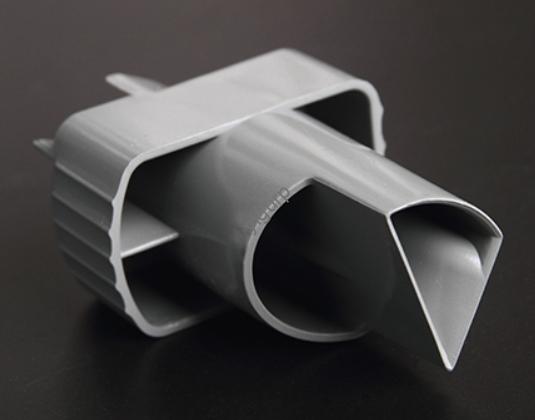If you’re a product designer or manufacturer looking to create accurate 3D printing handboards for new product development, one of the first questions you’ll ask is: “What materials should I use?” Choosing the right material directly affects your handboard’s durability, появление, and whether it matches your final product’s performance. Let’s break down the most common 3D printing handboard materials, их использование, and how to pick the best one for your project.
Common 3D Printing Handboard Materials & Their Key Details
To make it easy for you to compare, we’ve organized the top materials into a clear table. Each entry includes the material name, suitable 3D printing technology, main advantages, and typical handboard applications.
| Тип материала | Suitable 3D Printing Technology | Ключевые преимущества | Typical Handboard Applications | Average Cost (За кг) |
| Инженерные пластмассы (ABS/PLA) | ФДМ (Моделирование сплавленного осаждения) | Бюджетный, легко печатать, Хорошее воздействие сопротивления (АБС) | Прототипы потребительских продуктов (игрушки, товары для дома), structural test parts | \(20 – \)50 |
| Фотополимерные смолы | СЛА (Стереолитмикромография)/DLP (Цифровая обработка света) | Высокие детали, Гладкая поверхность отделка, высокая точность | Высокие прототипы (electronic casings, модели ювелирных изделий), visual display handboards | \(80 – \)150 |
| Rubber-Like Materials | FDM/SLS (Селективное лазерное спекание) | Гибкий, эластичный, good grip | Handboards for soft parts (схватки, прокладки, обувные подошвы) | \(60 – \)120 |
| Металлические материалы (Titanium Alloy/Stainless Steel) | СЛМ (Селективное лазерное плавление)/СЛС | Высокая сила, коррозионная стойкость, теплостойкость | Industrial part prototypes (Автомобильные компоненты, аэрокосмические части), functional test handboards | \(300 – \)800 |
| Керамические материалы | SLA/SLS | Высокая температурная стойкость, высокая точность, Эстетическая привлекательность | Artistic handboards, dental implant models, high-temperature test parts | \(150 – \)300 |
| Составные материалы (Carbon Fiber-Reinforced Plastic) | FDM/SLS | Легкий вес, Высокая сила, жесткий | High-performance handboards (Римские рамки, sports equipment prototypes) | \(100 – \)250 |
| Food Materials (Sugar/Chocolate) | Specialized Food 3D Printers | Edible, customizable shapes | Promotional handboards (food product samples, decorative cake toppers) | \(50 – \)100 |
| Gypsum Materials (Colored) | Переплет | Vibrant colors, легко формировать, бюджетный | Visual display handboards (скульптуры, Архитектурные модели) | \(30 – \)80 |
| Artificial Bone Powder | SLS/SLM | Биосовместимый, matches bone structure | Medical handboards (orthopedic implant prototypes, Хирургические гиды) | \(500 – \)1,200 |
How to Choose the Right Material for Your 3D Printing Handboard
Picking a material isn’t just about cost—it needs to fit your handboard’s purpose. Вот 4 key factors to consider, with simple questions to guide your decision:
1. What’s the Handboard’s Main Use?
- If it’s for visual display (НАПРИМЕР., showing a product’s design to clients), идти за фотополимерные смолы (гладкая поверхность) или colored gypsum (яркие цвета).
- If it’s for Функциональное тестирование (НАПРИМЕР., checking if a part can withstand pressure), выбирать Инженерные пластмассы (АБС) или Металлические материалы (Высокая сила).
- If it’s for medical or biocompatible needs (НАПРИМЕР., orthopedic prototypes), artificial bone powder лучший выбор.
2. Какой у тебя бюджет?
- Budget-friendly options (under $50/kg): Плата (тип инженерного пластика) and gypsum. Great for simple visual handboards.
- Mid-range options (\(50 – \)200/кг): АБС, rubber-like materials, и составные материалы. Balanced for most testing and display needs.
- High-end options (over $200/kg): Металлы (Титановый сплав) and artificial bone powder. For industrial or medical-grade handboards.
3. Do You Need Special Properties?
- Гибкость: Rubber-like materials are the only choice for handboards that need to bend (НАПРИМЕР., a prototype of a phone case with a soft edge).
- Теплостойкость: Ceramic materials or stainless steel work best if your handboard will be exposed to high temperatures (НАПРИМЕР., a prototype of a kitchen appliance part).
- Легкий вес & Сила: Composite materials like carbon fiber-reinforced plastic are perfect for handboards that need to be strong but not heavy (НАПРИМЕР., a drone frame prototype).
Yigu Technology’s View on 3D Printing Handboard Materials
В Yigu Technology, we believe that the right 3D printing handboard material is the bridge between design ideas and market-ready products. Based on our work with hundreds of manufacturing clients, Инженерные пластмассы (ABS/PLA) и фотополимерные смолы are the most versatile choices for most new product 研发 (Ведущий&Дюймовый) projects—they balance cost, ease of printing, и производительность. For industrial clients needing high-strength handboards, we recommend carbon fiber composites or stainless steel, as they replicate the durability of final parts. We also see growing demand for biocompatible materials like artificial bone powder in medical R&Дюймовый, and we’re committed to offering these options to support innovative healthcare solutions.
Часто задаваемые вопросы
1 квартал: Can I use PLA for functional test handboards?
PLA is great for visual handboards, but it’s less durable than ABS. For light functional tests (НАПРИМЕР., checking fit), it works. But for tests involving impact or heat, ABS or metal is better.
2 квартал: Are rubber-like materials suitable for long-term handboard use?
Rubber-like materials can degrade slightly over time (especially if exposed to sunlight), so they’re best for short-term handboards (НАПРИМЕР., 1-3 месяцы тестирования). Для более длительного использования, consider adding a protective coating.
Q3: How much does a metal 3D printing handboard cost compared to a plastic one?
В среднем, a metal handboard costs 5-10 times more than a plastic one. Например, a small plastic handboard (100глин) might cost \(5-\)10, while a similar metal handboard could cost \(50-\)100. The exact price depends on the metal type (titanium is more expensive than stainless steel) and handboard size.
